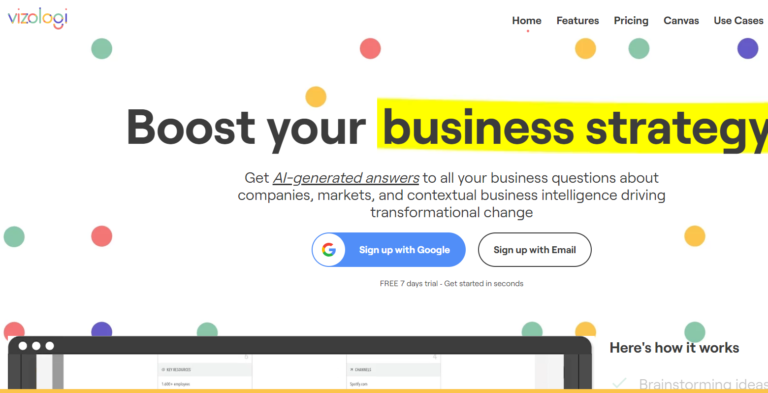
Are you a researcher looking to streamline your work process and enhance your productivity? Look no further! In this article, you will discover the top AI tools that are specifically designed to assist researchers like yourself. From data analysis and visualization to language translation and citation generation, these tools are here to simplify and optimize your research journey. So, let’s explore the best AI tools for researchers and unlock a world of efficiency and innovation.

Literature Search
As a researcher, one of the most important tasks you have is conducting literature searches. This involves finding relevant scholarly articles, books, and other sources of information to support your research. Fortunately, there are AI-powered tools available to make this process easier and more efficient.
Keyword-based Search Tools
Keyword-based search tools are the most basic type of tool available for conducting literature searches. These tools allow you to enter keywords related to your research topic and retrieve a list of relevant articles. They use algorithms to search through databases and online repositories to find articles that match your keywords.
Some popular keyword-based search tools for researchers include Google Scholar, PubMed, and Scopus. These tools are widely used and provide access to a vast amount of scholarly literature. They allow you to filter search results based on various criteria such as publication date, author, and journal.
Semantic Search Tools
Semantic search tools take literature search to the next level by using AI techniques to understand the meaning of your search query. Instead of relying solely on keywords, these tools analyze the context and intent behind your query to provide more relevant search results.
One popular semantic search tool is Microsoft Academic. It uses natural language processing and machine learning algorithms to understand the meaning of your search query and retrieve relevant articles. It also provides additional features such as citation analysis and collaboration network visualization to help you discover new research connections.
Data Collection and Analysis
Once you have gathered relevant literature for your research, the next step is to collect and analyze data. AI tools can greatly assist in this process by automating data collection and providing advanced analysis techniques.
Text Analysis Tools
Text analysis tools use natural language processing techniques to extract meaningful information and insights from textual data. These tools can analyze large volumes of text and identify patterns, sentiments, and other relevant information.
One popular text analysis tool is IBM Watson Natural Language Understanding. It can analyze text documents and extract entities, keywords, categories, and sentiment analysis. It also provides features like emotion analysis and concept mapping to enhance your data analysis capabilities.
Data Visualization Tools
Data visualization tools allow you to present your research findings visually in the form of charts, graphs, and other visual representations. These tools make it easier for readers to understand complex data and draw insights from it.
Tableau is a widely used data visualization tool that offers a wide range of functionalities. It allows you to create interactive visualizations, dashboards, and reports. You can easily connect your data sources and explore data using drag-and-drop features. Tableau also offers advanced features like forecasting and statistical analysis to enhance your data exploration and presentation.
Text Generation and Summarization
As a researcher, you often need to generate written content such as reports, articles, or summaries of your research findings. AI tools can be valuable in automating these tasks and improving the efficiency of your writing process.
Automatic Text Generation Tools
Automatic text generation tools use AI techniques such as natural language processing and machine learning to generate human-like text. These tools can generate paragraphs, essays, or even complete articles based on a given prompt or topic.
One popular automatic text generation tool is OpenAI’s GPT-3 (Generative Pre-trained Transformer 3). It has been trained on a massive amount of data and can generate high-quality text in multiple languages and styles. GPT-3 can be used for tasks like drafting emails, writing code, or even creating conversational agents.
Text Summarization Tools
Text summarization tools help you condense lengthy documents or articles into shorter summaries. These tools use AI techniques to identify key information and extract the most important points from the text.
One useful text summarization tool is Sumy. It is a Python library that provides different algorithms for extracting summaries from text documents. Sumy supports methods such as LSA (Latent Semantic Analysis), TextRank, and LexRank. You can customize the level of summarization according to your needs, whether you want a short summary or a more extensive one.
Language Translation
In today’s globalized world, language translation plays a crucial role in research collaboration and communication. AI-powered language translation tools have made it easier than ever to translate text between different languages.
Machine Translation Tools
Machine translation tools use AI algorithms to automatically translate text from one language to another. These tools have significantly improved over the years and can now provide accurate translations for various language pairs.
Google Translate is perhaps the most well-known machine translation tool. It supports a large number of languages and offers both text and speech translation capabilities. It uses neural machine translation, which allows it to understand the context and produce more accurate translations.
Multilingual Chatbots
Multilingual chatbots are AI-powered virtual assistants that can understand and respond to queries in multiple languages. These chatbots can be incredibly helpful for researchers who need to communicate with colleagues or obtain information in different languages.
A noteworthy multilingual chatbot is Microsoft’s Xiaoice. Initially developed for Chinese users, Xiaoice has expanded to support English and Japanese as well. It can engage in conversational interactions and provide information or assistance in a wide range of topics. Xiaoice is continually learning and improving its language capabilities through AI-powered algorithms.

Image Recognition and Object Detection
Visual data has become increasingly important in research, and AI tools for image recognition and object detection have proven to be valuable assets for researchers.
Image Classification Tools
Image classification tools use AI algorithms to categorize images into different classes or labels. These tools can be trained to recognize specific objects, patterns, or attributes in images.
One widely used image classification tool is Google Cloud Vision API. It offers pre-trained models for various image recognition tasks, such as detecting objects or identifying landmarks. The API provides a user-friendly interface for integrating image classification capabilities into your research applications.
Object Detection Tools
Object detection tools go beyond image classification by not only identifying objects but also locating and drawing bounding boxes around them. These tools are particularly useful when you need to analyze images with multiple objects or perform tasks like counting instances of an object in a dataset.
YOLO (You Only Look Once) is a popular object detection framework known for its real-time performance. It can detect and classify objects in images or videos with impressive accuracy and speed. YOLO has several versions available, each offering different trade-offs between speed and accuracy, allowing researchers to choose the most suitable option for their specific needs.
Audio and Speech Processing
For researchers working with audio data or conducting research in fields like speech recognition and natural language processing, AI tools for audio and speech processing provide valuable functionalities.
Automatic Speech Recognition Tools
Automatic speech recognition (ASR) tools transcribe spoken language into written text. These tools have a wide range of applications, from transcription services to voice-controlled systems.
Google Cloud Speech-to-Text is a powerful ASR tool that supports multiple languages and audio formats. It can convert spoken language into highly accurate text with punctuation and formatting. The tool also offers real-time streaming transcription, making it suitable for applications that require immediate processing of speech input.
Speaker Identification Tools
Speaker identification tools use AI techniques to identify or verify the identity of a speaker based on their voice characteristics. These tools can be valuable for researchers studying areas like forensic phonetics or voice biometrics.
One notable speaker identification tool is LIUM SpkDiarization. It is an open-source toolkit specifically designed for speaker diarization, which involves segmenting and clustering speech into different speakers. LIUM SpkDiarization offers various algorithms for diarization and provides an interface for visualizing speaker clusters.
Knowledge Graphs and Entity Extraction
Knowledge graphs and entity extraction tools help researchers organize and analyze structured and unstructured data by identifying entities and their relationships.
Knowledge Graph Construction Tools
Knowledge graph construction tools use AI techniques to create knowledge graphs, which represent knowledge as a network of interconnected entities and their attributes.
OpenLink Virtuoso is a powerful tool for creating and managing knowledge graphs. It supports various data sources and provides query and reasoning capabilities. With Virtuoso, researchers can build comprehensive knowledge graphs that encompass multiple domains of knowledge and aid in data integration and discovery.
Named Entity Recognition Tools
Named entity recognition (NER) tools identify and categorize named entities such as people, organizations, and locations in text documents. NER tools make it easier to extract valuable information from text and facilitate data mining and analysis.
Stanford NER is a widely used NER tool developed by Stanford University. It uses machine learning algorithms to recognize named entities in text, such as names of people, organizations, or locations. Stanford NER provides pre-trained models for multiple languages, making it useful for researchers working with multilingual data.
Data Cleaning and Preprocessing
Data cleaning and preprocessing are essential steps in any research project. AI tools can help automate these tasks and ensure that your data is accurate, complete, and ready for analysis.
Data Cleaning Tools
Data cleaning tools use AI algorithms to identify and correct errors, inconsistencies, or missing values in your datasets. These tools can save you valuable time and effort in the data cleaning process.
OpenRefine is a powerful data cleaning tool that allows you to explore, clean, and transform complex datasets. It offers functionalities like cluster-based record reconciliation and automated data transformation. OpenRefine also provides a user-friendly interface for interactive data cleaning tasks.
Data Preprocessing Tools
Data preprocessing tools help researchers prepare their data for analysis by transforming it into a suitable format or reducing its dimensionality.
The Python library scikit-learn provides a wide range of data preprocessing techniques, such as scaling, encoding categorical variables, or handling missing values. It also offers feature selection methods and dimensionality reduction techniques like principal component analysis (PCA). Scikit-learn simplifies the preprocessing steps and integrates well with other machine learning libraries.
Experimental Design and Analysis
Experimental design and analysis are critical aspects of research. AI tools can assist researchers in designing experiments and applying statistical analysis techniques to their data.
Experimental Design Tools
Experimental design tools help researchers plan and design experiments by guiding them through various factors and levels. These tools ensure that experiments are conducted in a systematic and controlled manner.
Optimizely is a widely used experimental design tool that provides a platform for A/B testing and optimization experiments. It allows researchers to define test variations, set experiment goals, and monitor the results in real-time. Optimizely offers features like audience targeting and statistical significance testing to help you draw valid conclusions from your experiments.
Statistical Analysis Tools
Statistical analysis tools provide researchers with a range of statistical techniques and tests to analyze their data and draw meaningful conclusions. These tools can handle complex statistical calculations and generate visualizations to aid in interpretation.
RStudio is a popular integrated development environment (IDE) for the R programming language. It provides numerous statistical analysis packages and libraries, making it a powerful tool for researchers who work with statistical data. RStudio offers a user-friendly interface for data manipulation, visualization, and statistical modeling.
Collaboration and Document Management
Collaboration and document management are crucial for researchers working in teams or sharing their work with colleagues. AI-powered tools can streamline collaboration and facilitate efficient document management.
Collaborative Writing Tools
Collaborative writing tools allow researchers to collaborate on documents in real-time, making it easier to work together on research papers, reports, or grant proposals.
Google Docs is a widely used collaborative writing tool that offers seamless real-time collaboration features. Multiple researchers can simultaneously edit a document, leave comments, or suggest changes. Google Docs also provides version history and revision tracking, making it easy to monitor and manage document revisions.
Document Management Tools
Document management tools help researchers organize, store, and retrieve their documents efficiently. These tools offer features like document search, version control, and metadata management.
Mendeley is a comprehensive document management tool designed specifically for researchers. It allows you to organize and annotate your documents, create citation libraries, and collaborate with others. Mendeley also offers a smart document search feature that can extract metadata from PDFs and make your research findings easily discoverable.
In conclusion, AI tools have revolutionized the research process by automating various tasks and enhancing researchers’ capabilities. From literature search to experimental design, from data analysis to collaboration, AI tools provide researchers with powerful functionalities that save time, improve accuracy, and enable new discoveries. Incorporating these tools into your research workflow can greatly enhance your productivity and help you achieve more impactful results.






